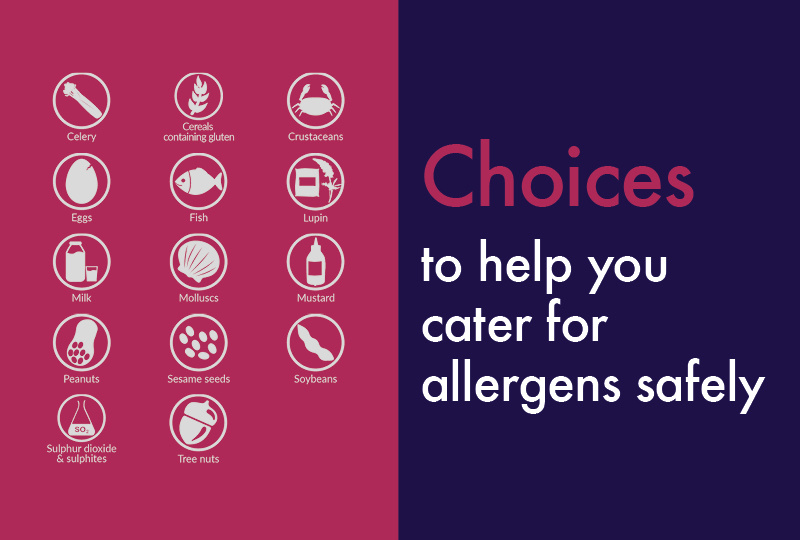Keeping staff, visitors and customers safe and up to date on changes with allergen information, whilst being fully transparent, is a necessity for any out of home eating establishment. Especially when the free from market has doubled in value since 2012 and estimated to be currently worth over £800 million*, it is evident that products marketed as not containing certain ingredients are ever increasing in popularity for consumption both in and out of home.
Giving you confidence when catering for allergens
Historically, medical reasons were the driving force behind the creation and purchase of any free from products but more recently, the demand has extended to those who wish to take on a diet free of certain known allergens as a lifestyle choice.
We know there are a total of 14 allergens identified by the EU FIC** and strict labelling transparency regulations are in place to ensure optimum consumer awareness and safety when any of these ingredients are used in the manufacturing or catering process.
But what are key considerations for out of home foodservice establishments when catering for allergens?
- Allergen terminology can be a bit of a minefield, with products containing known allergen ingredients being labelled as ‘contains’, ‘may contain’, ‘does not contain’ or ‘free from’, which have different meanings following risk assessments or meeting required thresholds, so it’s important to understand the differences in legislation.
- Consumers could have a medical food allergy or intolerance, or could simply be choosing a free from diet as a lifestyle choice, all with significantly different consequences should any allergen of concern be consumed unknowingly.
- The two most common allergens are cereals containing ‘gluten’ and ‘milk’, since gluten free and milk free (primarily milk substitutes) were the top two free from food/drink choices consumed in 2019*, so it’s important to provide a range of menu options to reflect this.
- The importance of labelling, for easily identifying and separating allergen containing ingredients, is essential. Labelling is also particularly prevalent for food-to-go and related hygiene, both of which have fast become key focusses for a large majority of out of home eating establishment in the face of recent Covid-19 challenges.
- With foodservice establishments now adapting their services to offer take-away and delivery, ensuring customer of safety through tamper-proof packaging has become more important than ever before too. An easy way to ensure this is achieved is with the use of tamper-proof labels, which give an indication that the food packaging may have been tampered with prior to being received.
This guide showcases our expertise in the field of dietary requirements and labelling, as well as providing an array of free from product options for the two most common allergens, cereals containing gluten and milk, all of which you can have absolute confidence with on your menus.
Sources:
* Mintel, free from foods, 2019
** Food Information for Consumers



